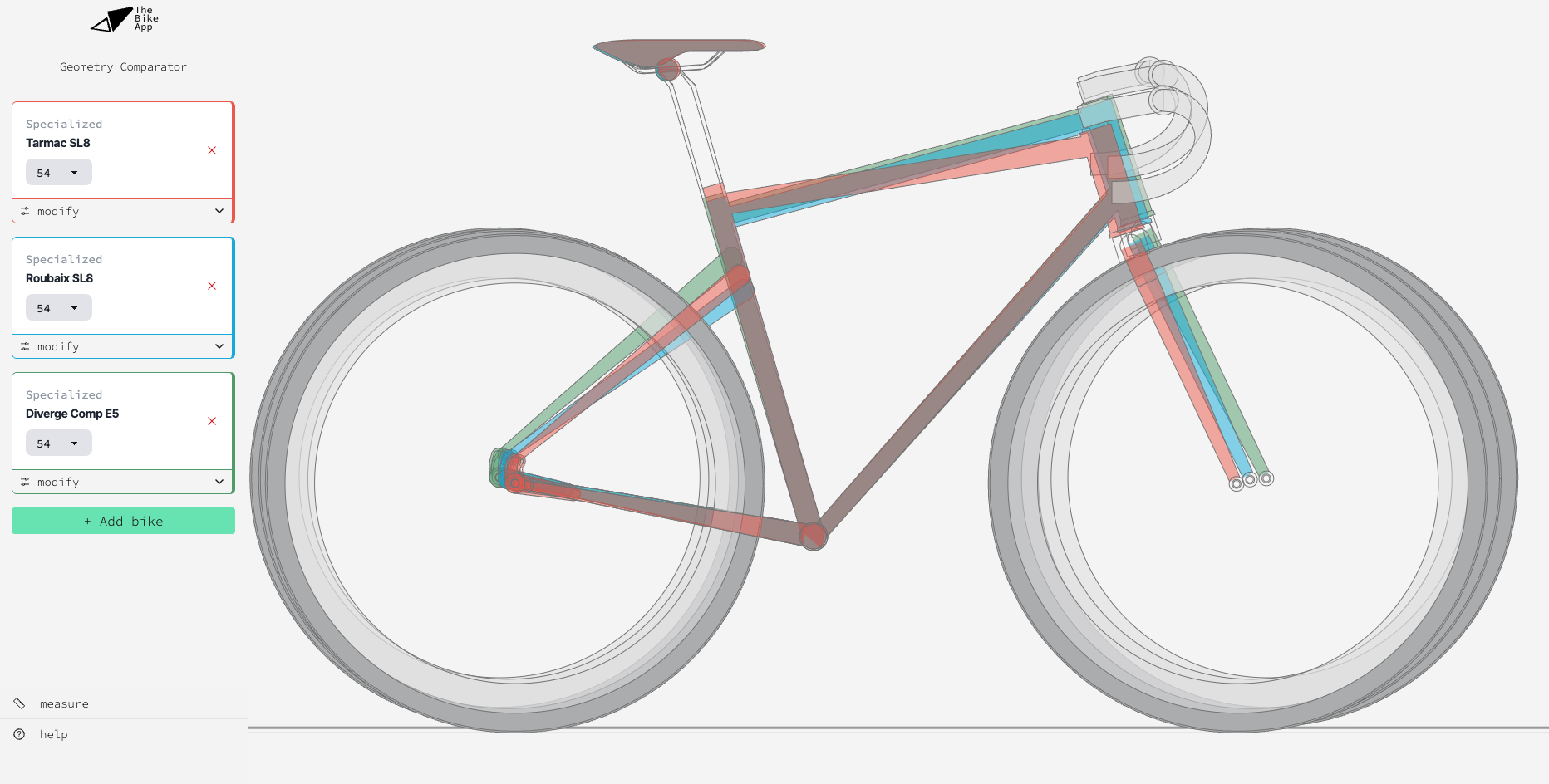Why Bike Geometry Matters
Choosing the right bike isn’t just about picking the correct frame size — it’s about understanding how geometry affects comfort, efficiency, and control. Two bikes labeled as "Medium" can feel dramatically different depending on their geometry. Whether you’re climbing steep mountain roads or cruising gravel paths, geometry plays a critical role in how the bike handles, fits, and performs.
What is Bike Geometry?
Bike geometry refers to the measurements and angles that define a bike’s frame. These dimensions influence how a bike fits a rider and how it behaves on the road or trail. Understanding geometry helps you match a bike to your riding style, body proportions, and performance goals.
Key Terms Explained
Here are the key terms commonly found in manufacturers' geometry tables:
Stack and Reach
Stack is the vertical distance from the bottom bracket to the top of the head tube. Reach is the horizontal distance from the bottom bracket to that same point. Together, these determine your riding position — aggressive and low, or upright and relaxed.
Together, these metrics make up a bike’s geometry. Because manufacturers can create an infinite number of combinations, it can be hard to know what will work best for you when shopping for a new bike.
Bridging Bike Geometry and Position
Luckily, modern bike frames are designed with adaptability in mind. Adjusting a bike to fit a rider — a process known as bike fitting — involves fine-tuning components like:
- Seat height
- Seatpost offset
- Saddle position and selection
- Spacer stack height
- Stem length and angle
- Handlebar reach and width
This flexibility is powerful — but it adds complexity. Beyond the frame itself, you need to ensure the bike’s components can be adjusted to achieve your ideal position.
Simplifying Bike Geometry
Bike geometry can feel overwhelming — a tangle of angles, tube lengths, and buzzwords like “reach” and “stack.” But at its core, geometry is just a means to an end: achieving your ideal riding position.
And here’s the key insight — it’s not just about the bike, it’s about the bike–rider system. Instead of focusing on how a frame achieves a position, it’s often simpler to reverse-engineer the position itself.
Your riding posture is ultimately defined by the relationship between three contact points: your hands, hips, and feet. Since your feet are fixed by the pedals, we can treat them as the origin. That leaves just two things to position:
- Where are your hands relative to your feet?
- Where is your butt relative to your feet?
These can be boiled down to four key values:
- Hand X – how far forward your hands are
- Hand Y – how high your hands are
- True Seat Angle – fore–aft hip position relative to your feet
- Seat Height – hip height above the bottom bracket
By focusing on these four outputs, you can evaluate any bike setup — regardless of geometry complexity — in terms of how it positions your body. It’s a rider-first approach, and it makes understanding geometry much more intuitive.
Race vs Endurance vs Gravel Geometry
To better understand the "position-first" mindset, let’s compare the geometries of three real-world bikes across different categories:
- Specialized Tarmac SL8 (Race Bike): Low stack, long reach, steep head angle, short wheelbase. Built for speed and responsiveness.
- Specialized Roubaix SL8 (Endurance Bike): Higher stack, shorter reach, more relaxed angles. Designed for comfort on long rides.
- Specialized Diverge (Gravel Bike): Long wheelbase, slacker angles, increased bottom bracket drop. Optimized for off-road stability and control.

Using the Bike Comparator
If your current bike fits you well and you’re simply looking to replicate that position on a different frame, our free Bike Geometry Comparison Tool is a powerful way to test different frame geometries — combined with adjustable components — to match your fit.

Here’s what it lets you do:
- Search for two or more bike models
- View stack, reach, and other key metrics side-by-side
- Visualize geometry changes across different sizes
- Compare brands (e.g., Trek vs Specialized) in the same category
It’s the fastest way to find a frame that fits your riding preferences and body dimensions.
What’s the Best Bike Geometry for My Body?
Finding a frame that suits your proportions through trial and error can be time-consuming — and expensive.
The most reliable path is to book a session with a professional, reputable bike fitter in your area. A proper fit will take into account your physiology, flexibility, injuries, and performance goals — and define your ideal position based on data, not guesswork.
Once your fit is dialed in, use the BikeFit Simulator to test hundreds of real-world geometries in real time — and see how each frame aligns with your personalized fit. It’s a fast, visual way to narrow your choices and shop smarter.



